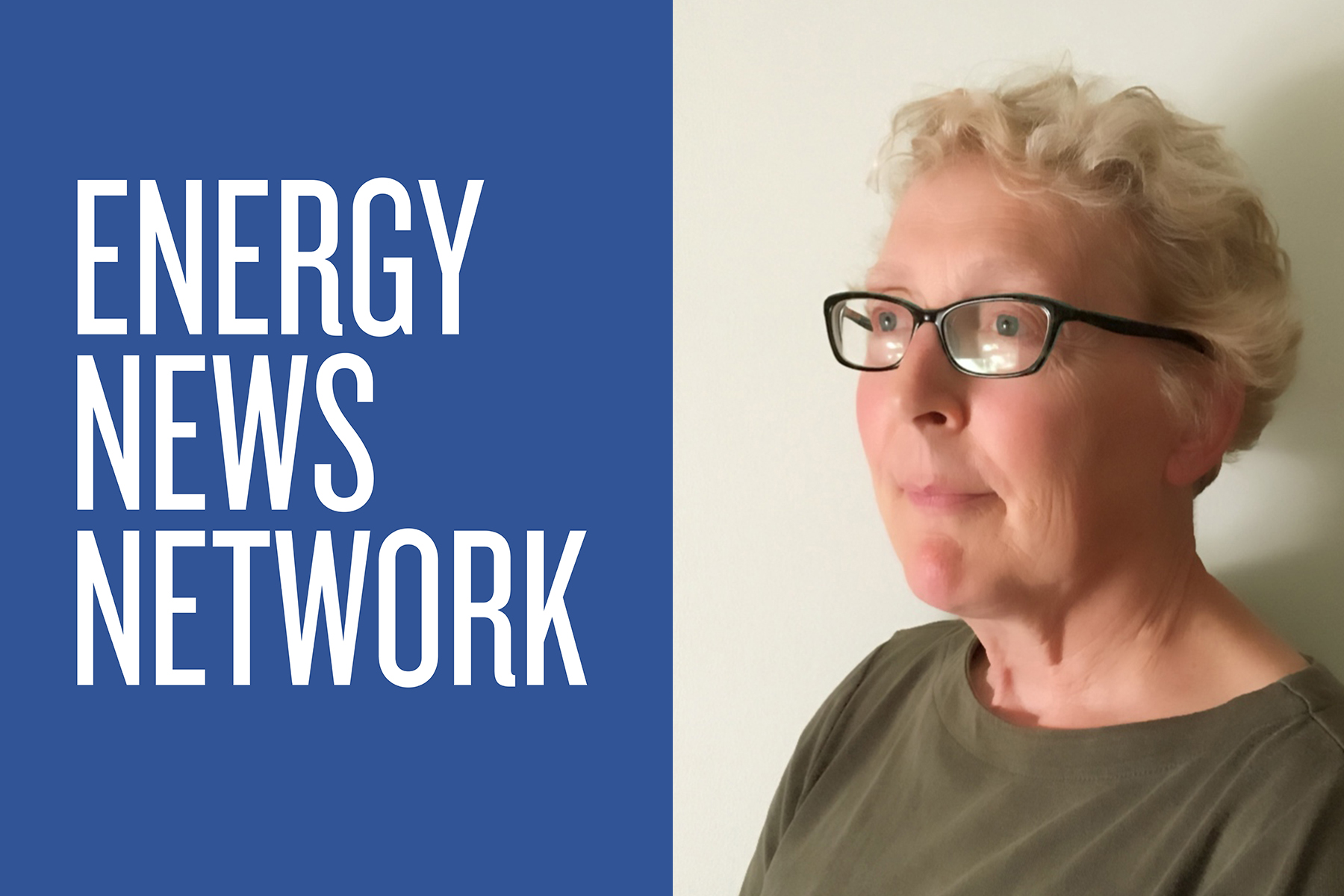
In our “behind the scenes” blog series, get to know our amazing team of dynamic journalists who make the Energy News Network possible. This month, we profile Karen Uhlenhuth who reports out of Kansas City, Kansas and has been with the Energy News Network since 2013. Karen covers Iowa, Missouri, Kansas, Nebraska and the Dakotas.
Tell me about your reporting background thus far?
I wish I could say I was destined to report the news. Alas, nothing quite so profound. My older sister decided to take a journalism class in high school. I understood it might help one develop better writing skills, so I thought I’d do that too. I did okay in the class, and sometimes found it fun to ask questions of complete strangers. In hindsight, I realized perhaps my deepest drive was a desire to rebel against the all-encompassing medical-ness of my family—father and brother medical doctors, mother and sister nurses. Reporting seemed pretty much a 180 from that.
In the beginning, I had a few bad and thankfully brief jobs with small newspapers in Chicago. My first substantial gig was with the Kansas City Star—I worked there for 26 years until I was laid off in 2008. I covered local and regional news for a total of four or five years and wrote in the features department for my remaining 20 or 22 years there. After being laid off from the Star, I began researching and writing about pediatric bioethics issues for Children’s Mercy Hospital in Kansas City.
You mentioned starting your journalism career in Chicago, is that where you grew up?
I was born in Baltimore and lived there until I was about 12, then my family moved to the south side of Chicago.
When did you begin focusing on energy issues specifically?
I wrote some stories about environment and energy issues while at the Star, but since it wasn’t my beat, I could only nibble around the edges.
What is a typical day for you as a working journalist?
I get up way too early—often 4 AM or 2 AM on a really bad morning. I make coffee before anything else, then I get my preteen and teenage daughters up and to school. After, I usually go to the gym for an awful torture session. I return home around 9 AM—make more coffee, sit at my dining room table, make phone calls and write on my laptop. Around 3 PM I usually have to retrieve my daughters—sometimes I get work done after 3 PM, but often times I don’t. I love my ability to fit work in around the other demands of my day and working at home is a dream. If I’m having trouble with a lead, an ending, or if I’m waiting for someone to call me back, there’s always a load of laundry or some dinner preparation to distract me momentarily from the hard stuff.
What comes easiest to you as a freelance journalist?
To my surprise, I generally find that coming up with ideas is one of the easiest tasks involved. Although occasionally when I have a hard time, I find that if I read old stories, or call people, the ideas start popping.
How do you feel about the future of the news business and where do you think things are going?
Many newsrooms have felt the earth shaking beneath them, but I do see that some news operations are getting stronger, adding staffers and finding a robust audience. NPR stations appear to be thriving and KCUR in Kansas City continues to add staff—many of them former reporters/editors for the Kansas City Star. I wonder if perhaps many newsrooms have hit rock bottom and have only one direction to go. It took a long time for newspapers to figure out they should be on the web and charging people to read their content. Perhaps many news operations will find a much smaller niche they can support with paying readers. I think and hope the non-profit model that focuses on an issue that resonates with philanthropists will be a workable model.
Tell us about the most challenging or interesting story you have covered?
I have enjoyed being a thorn in the side of Interstate Power & Light, one of the largest utilities in Iowa. Interstate has made it clear in a multitude of ways that it has no use for energy efficiency or renewable sources of power, and that it is determined to keep on serving its customers with abundant fossil-fueled energy. We need to keep shining the light on outfits like Interstate.
How do you continue to do journalism in such a tough market?
The market is difficult, for sure, but I couldn’t be more pleased about reporting for a news product that covers an arena I think is as important as any out there. I love what I do and appreciate the opportunity to possibly have some impact from time to time.
Read Energy News Network stories by Karen Uhlenhuth.
The Energy News Network is published by Fresh Energy, a non-partisan, nonprofit organization that advocates for clean energy policy. The Energy News Network is an editorially independent news and information site, and its contents should not be considered to reflect policy positions of Fresh Energy or our donors.
